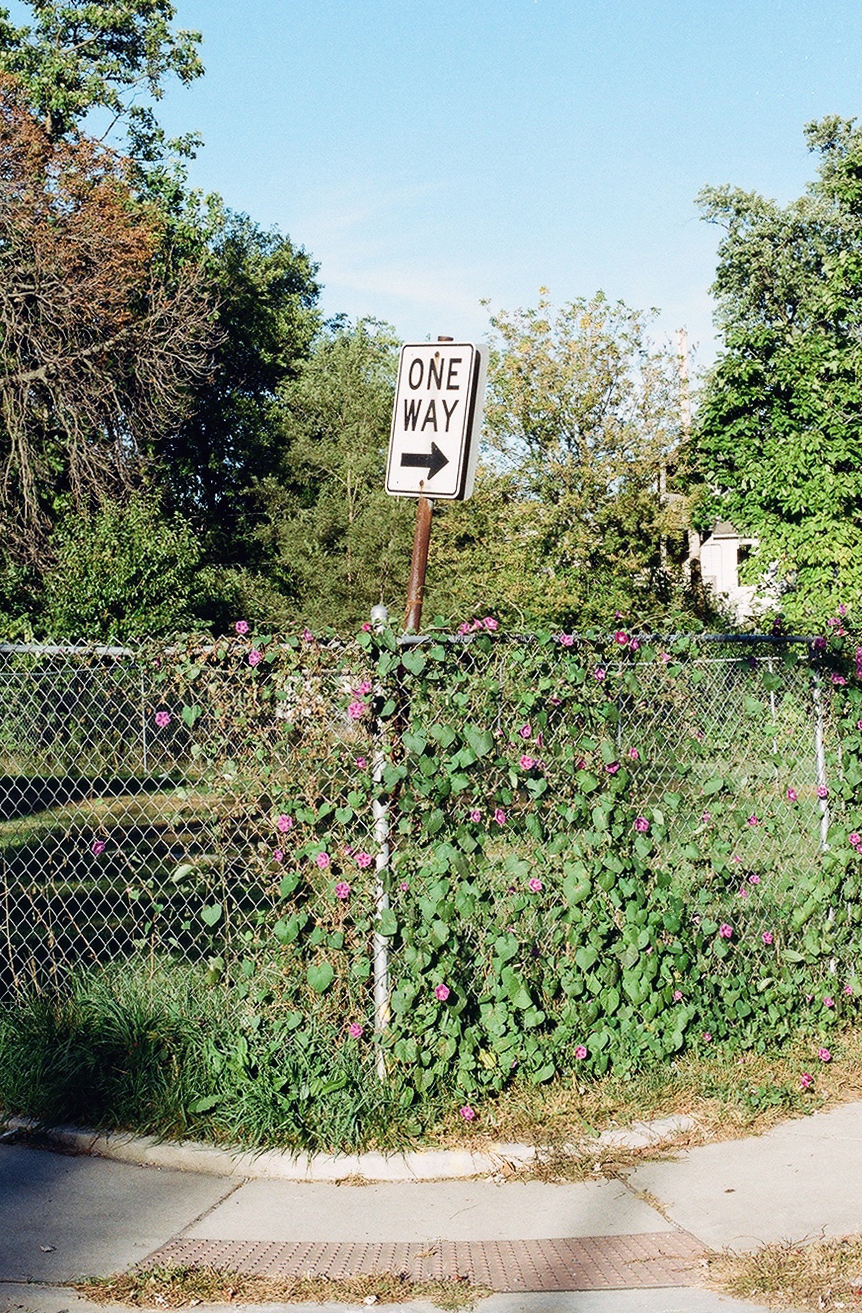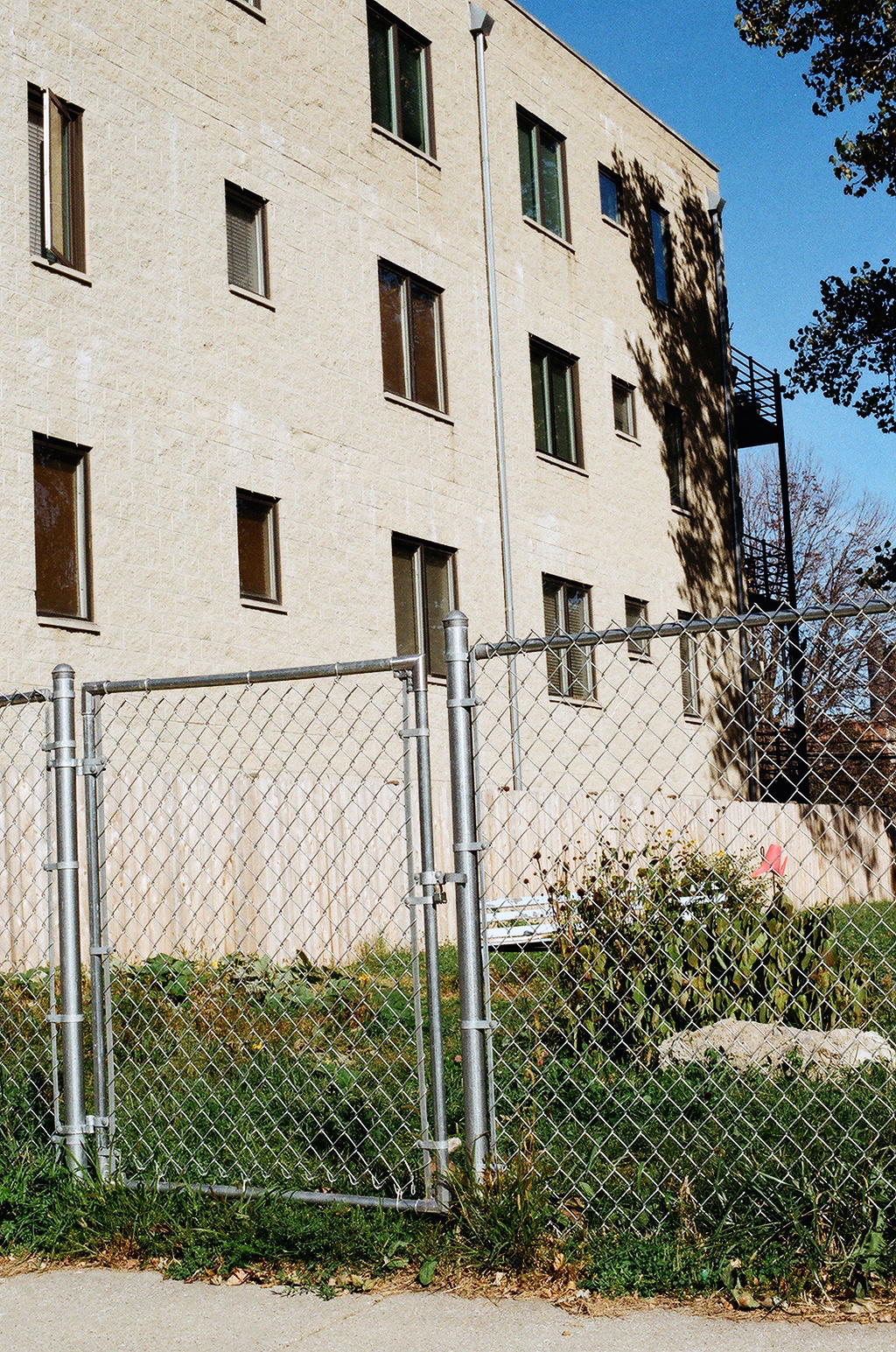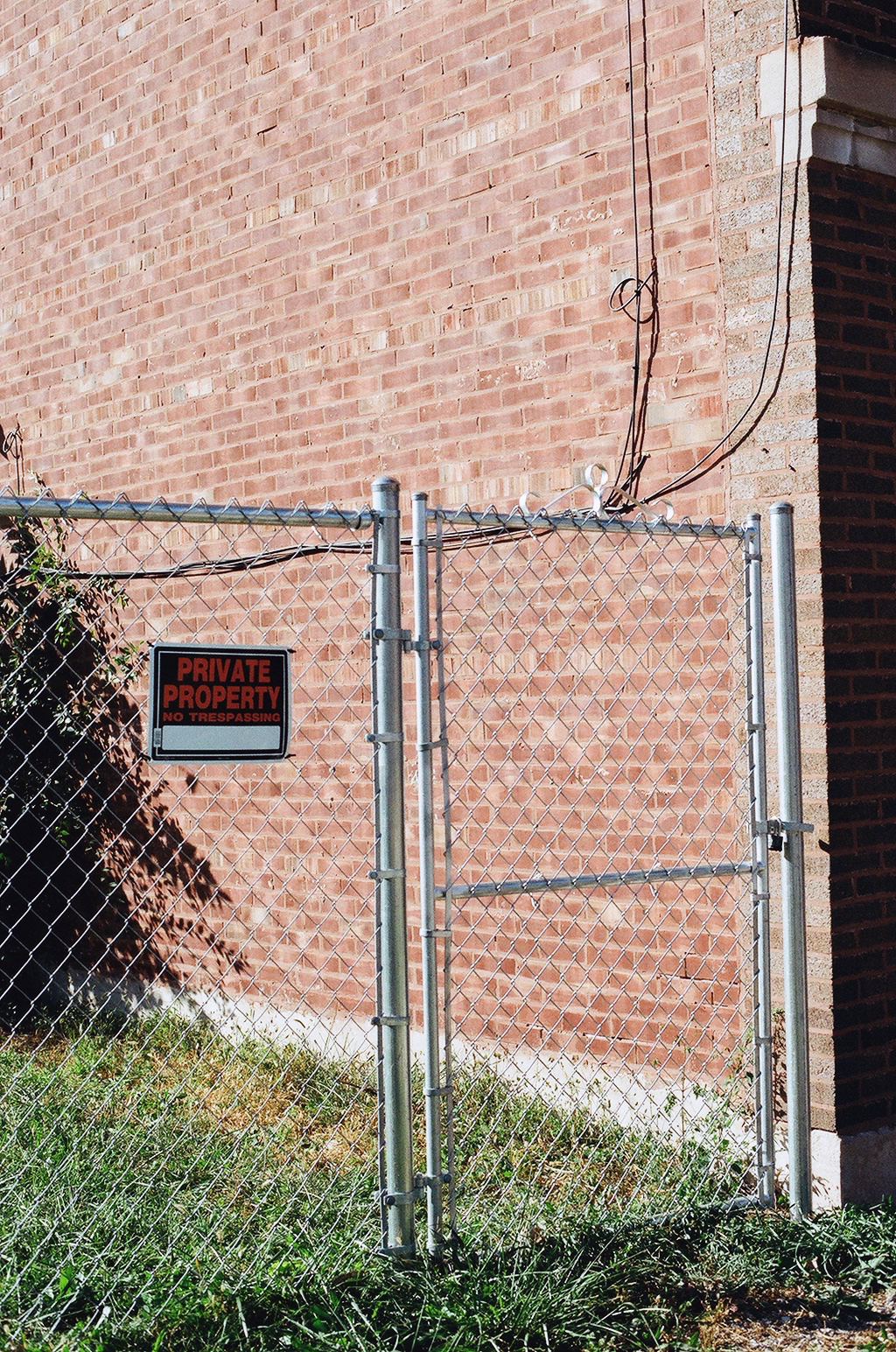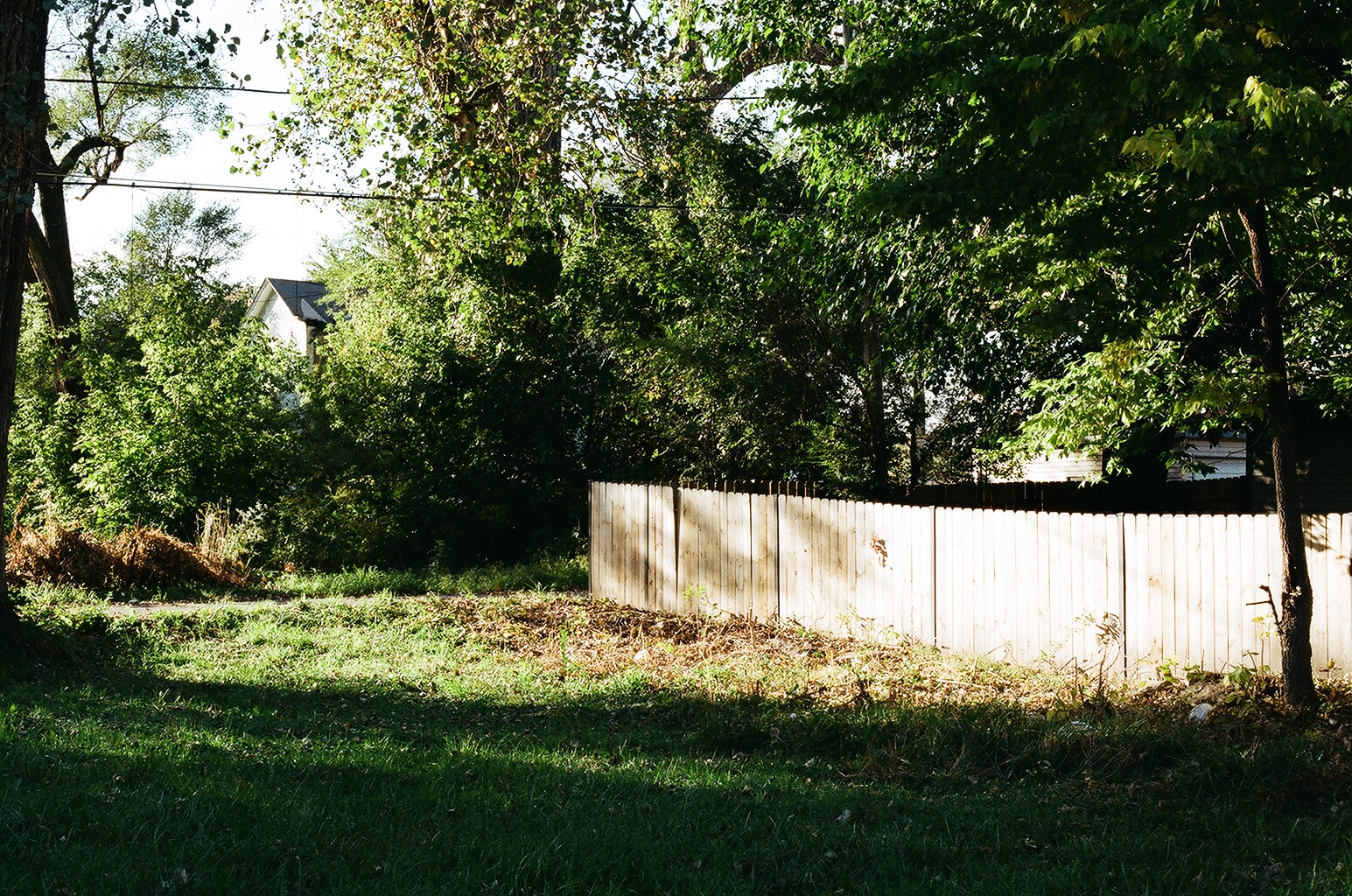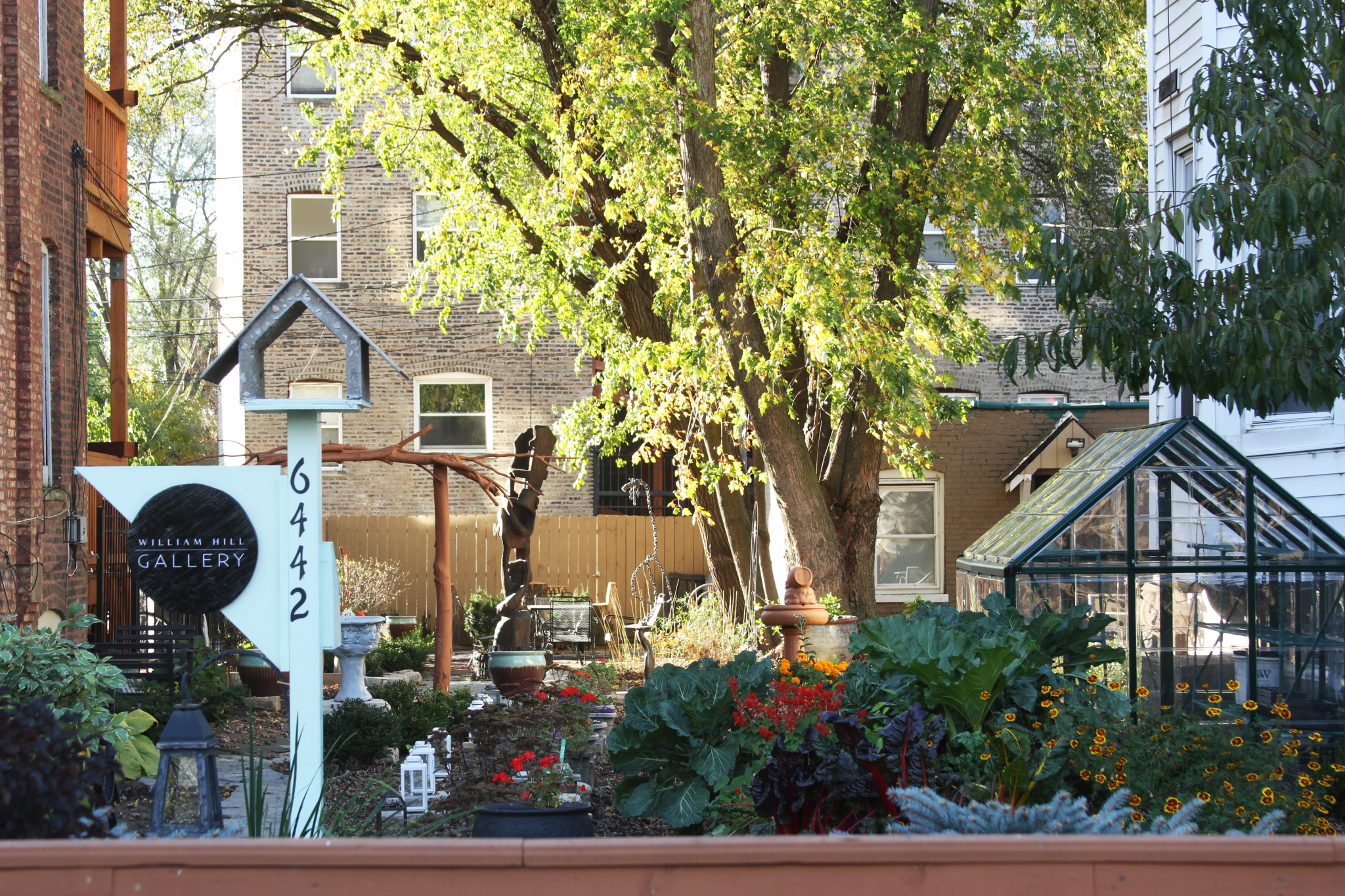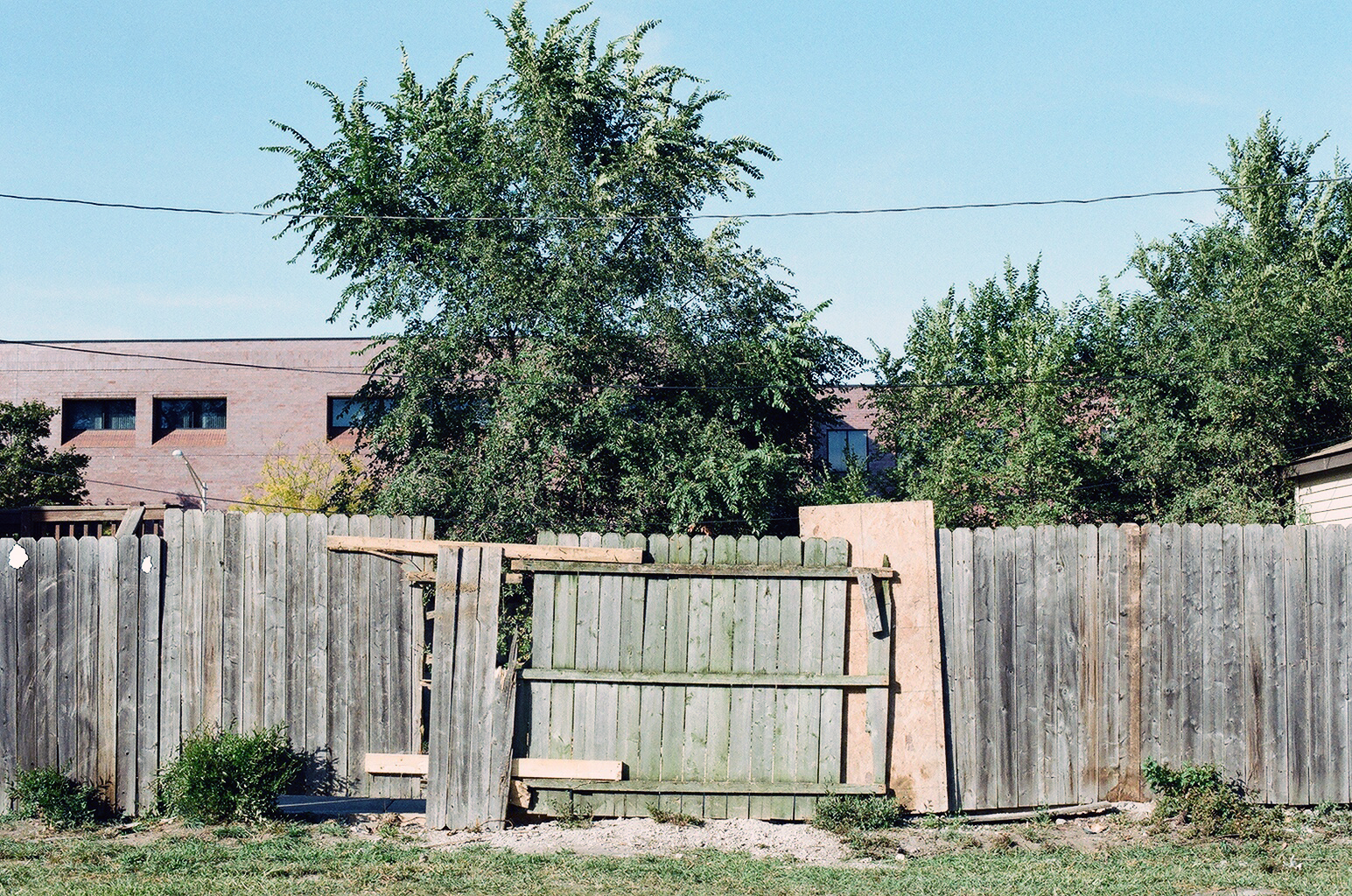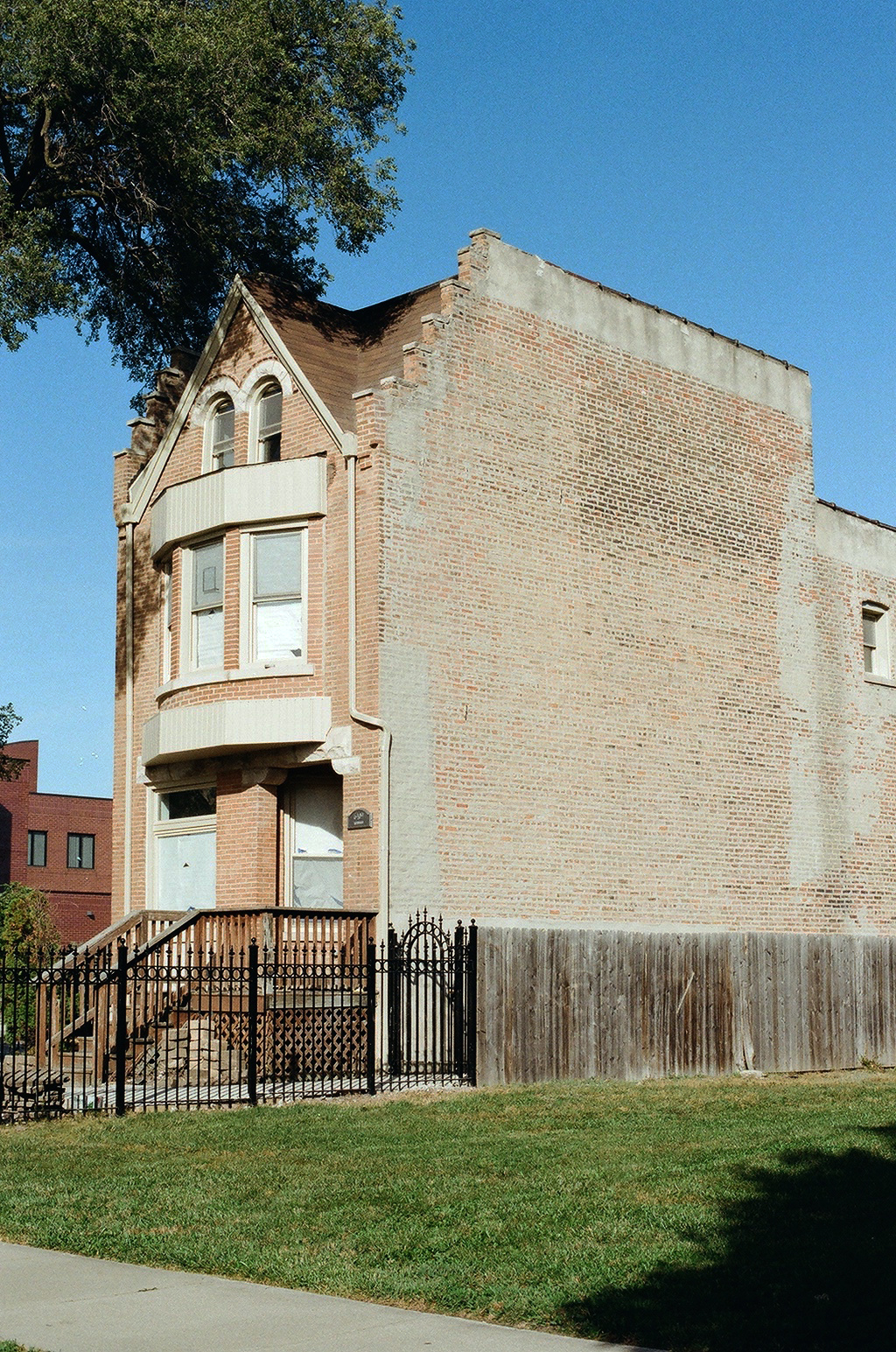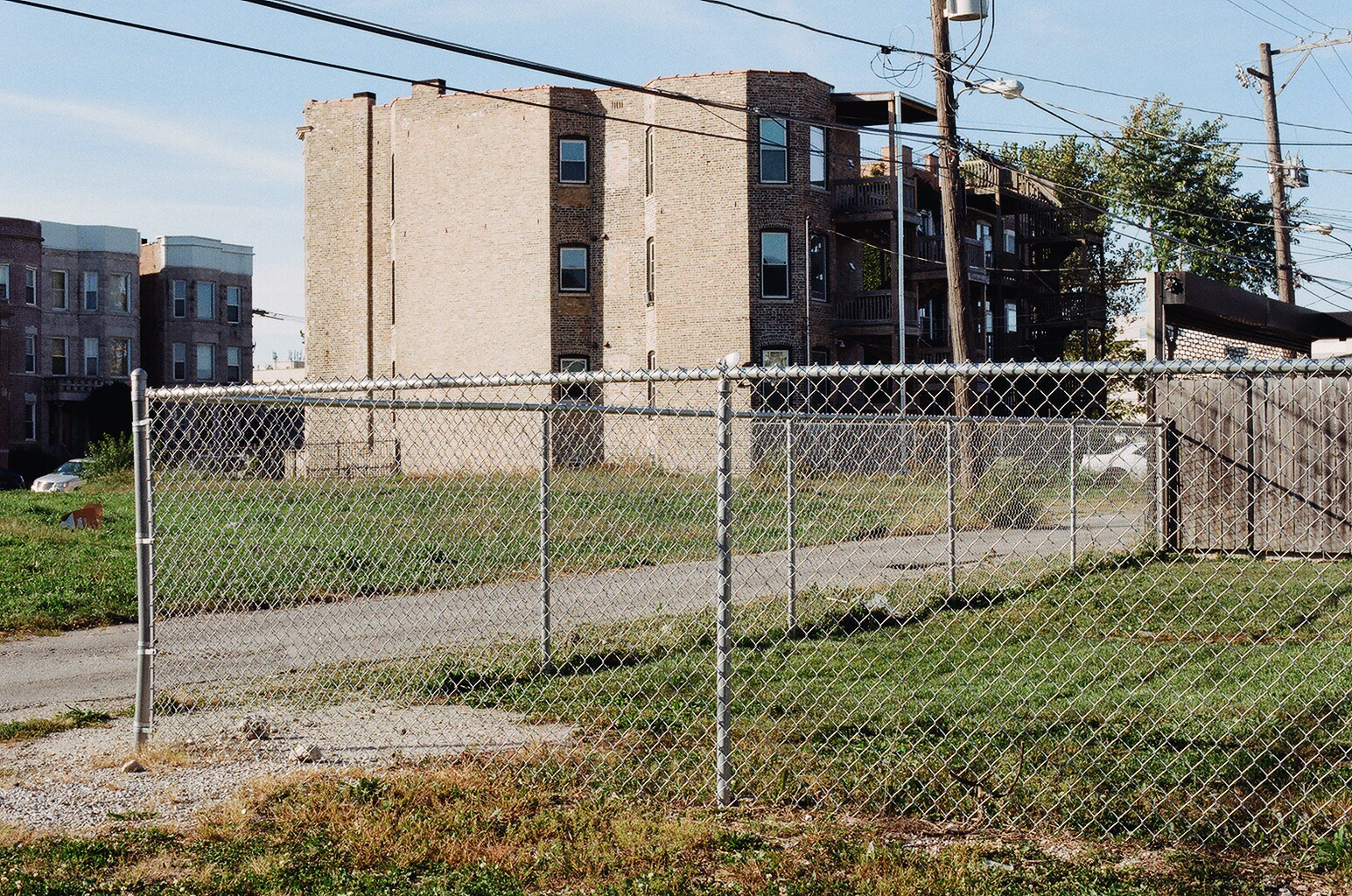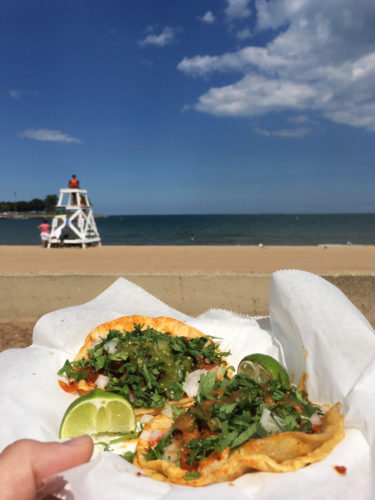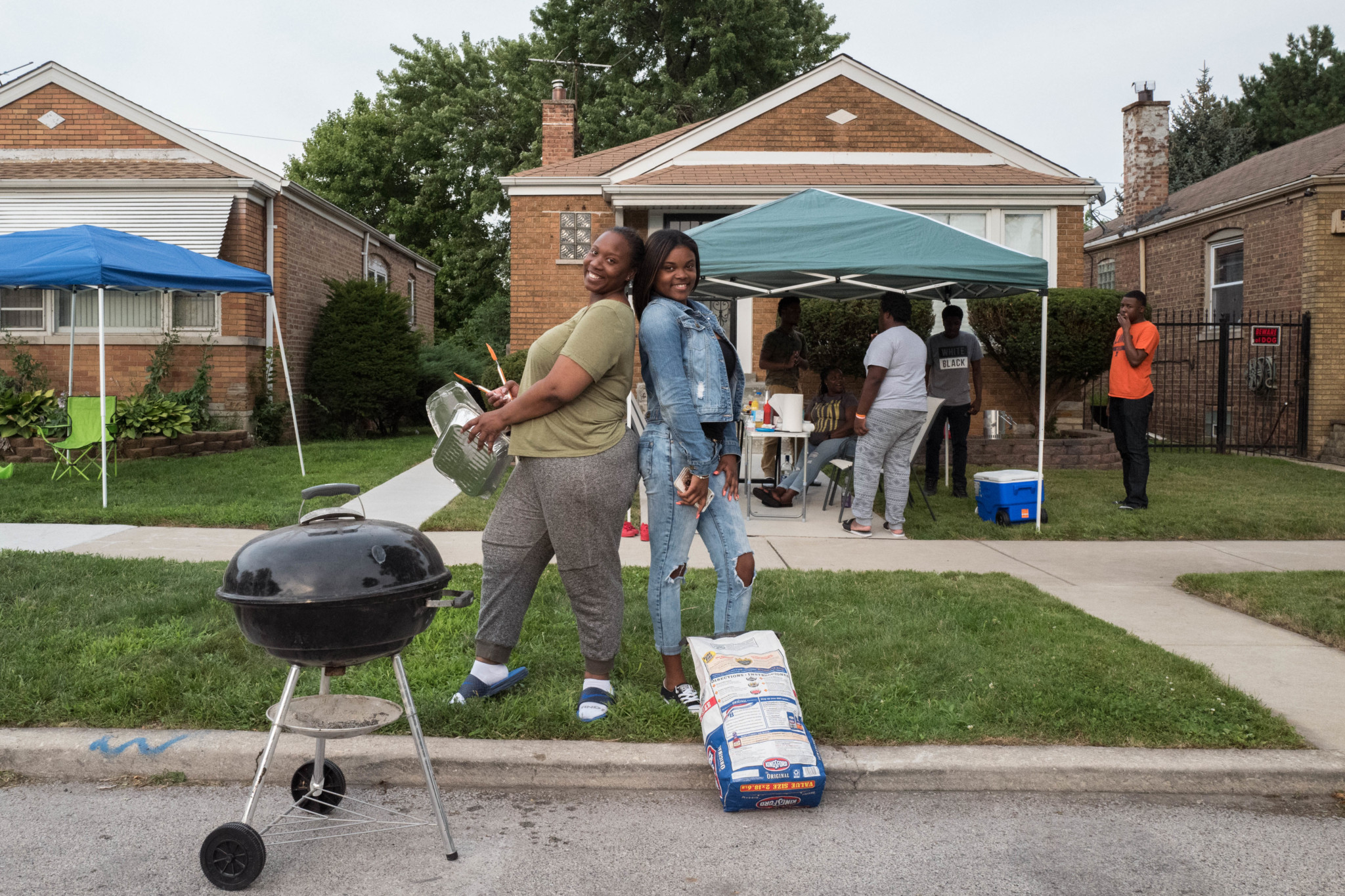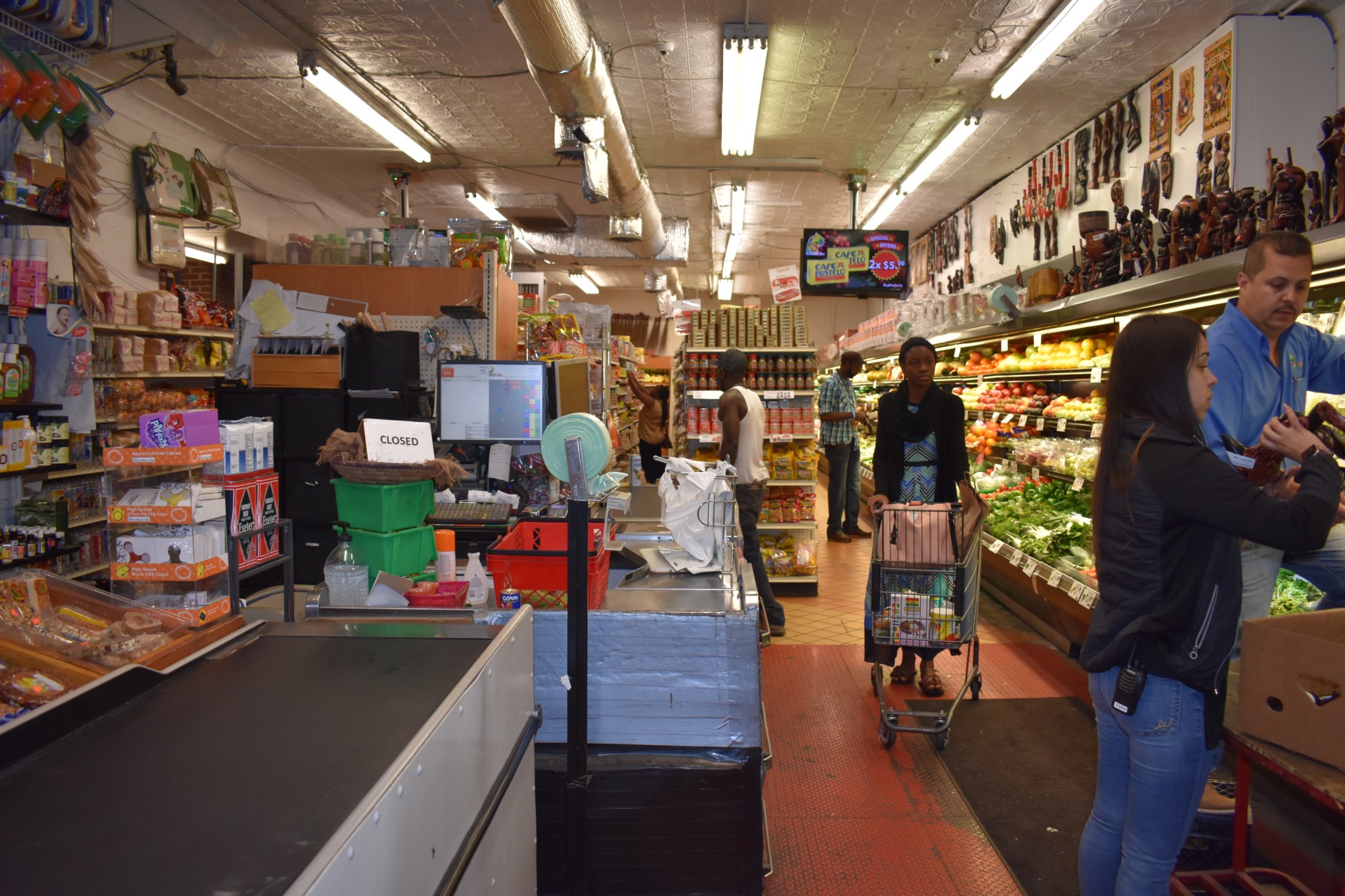In a 2014 column, Mary Schmich of the Tribune called block club signs an “underappreciated art form in Chicago.” These signs, which can be found on residential streets all over the South and West Sides, tend to follow a pattern: a word of welcome, the location of the block club, and a list of rules that prohibit loitering, drugs, loud music, littering, gambling, etc.
![Finn Jubak]()
Finn Jubak
Block clubs originally flourished in Chicago to combat the rising drug trade in the 1980s and 1990s, but activists and block club leaders say that the number of block clubs in the city has been increasing again in recent years. Now, instead of focusing solely on surveillance as the painted eyes on some signs suggest, block club platforms are expanding to include initiatives in housing, education, public health, green infrastructure and more.
And in some neighborhoods, the fundamental structure of block clubs is transforming: isolated groups of concerned neighbors are now becoming cohesive networks of block club “alliances” and “federations.”
“Our motto is ‘Connect the Blocks,’ ” says Val Free, the Lead Coordinator of the Southeast Side Block Club Alliance (SEBCA). During a recent SEBCA information session, she outlined the basic tenet of their strategy: the whole is greater than the sum of its parts.
Free believes an organization composed of block clubs can realize the full potential of the skills and resources that individuals in its neighborhood have to offer by connecting people within neighborhoods. In South Shore and the Southeast Side in general, says Free, “we have a lot of human capital that’s doing great things everywhere else but in their own neighborhoods. So how do we begin to engage those folks to feel like they’re a part of the neighborhood?”
One of SEBCA’s main goals is to reach out to residents that live and sleep in a neighborhood but don’t actually have a vested interest in it, or “bedroom neighbors,” in Free’s words. “They work someplace else but they never really live here,” she says.
Although she has lived in South Shore for years, Free was not always a block club and community organizer. She worked in corporate America for over twenty years, and says she used to be a bedroom neighbor herself.
“I was one of those bedroom neighbors—I came home, I went to sleep, I went to work, I went to sleep, and I did everything outside of my neighborhood,” she says. “I never wanted to move away from my neighborhood, but I did everything outside of [it]…My son didn’t go to the schools in the neighborhood, we weren’t a part of the neighborhood—we just lived here.”
But when she began organizing the people in her building to remove a negligent building manager, she “woke up and realized” what was happening to her neighborhood. She formed a tenants’ association for her building and they succeeded in removing the building manager. Although she hadn’t worked as a community organizer before, she found that her work in the Strong Communities department of the YMCA helped in community outreach. “Those skills kind of transferred to me and I didn’t realize that’s what was happening,” she says.
![Andrew Koski]()
Andrew Koski
After forming her building’s tenants’ association, she also formed a block club across the street. Then, while she was in transition from her job at the YMCA corporate office, she was drawn into block clubs and community organizing efforts by organizations that heard about her building’s success. From that point, her outreach efforts blossomed into three distinct organizations: The Planning Coalition, the Southeast Side Block Club Alliance, and South Shore Works.
She first formed the South Shore Neighborhood Network, which spawned an initiative that brought the leaders of eighty block clubs together at an assembly. Although she had initially intended to focus on South Shore, there was so much interest from block clubs in other Southeast Side neighborhoods that they expanded the group’s name to encompass the Southeast Side as a whole. The Planning Coalition now directs SEBCA, which organizes block clubs, tenants’ associations, and homeowners associations across the Southeast Side. It also created South Shore Works as an independent organization in order to specifically focus on development in South Shore.
SEBCA focuses specifically on organizing the neighborhoods of South Shore, Calumet Heights, Greater Grand Crossing, South Deering, and South Chicago. They want to give residents the tools to start their own block clubs—they’re currently making a block club handbook with resources for block club leaders. They also plan to bring the groups together once a year for an assembly where they can share information, discuss organizing models that they have found effective, and talk about the challenges that individual block clubs are facing.
Although SEBCA’s official launch was on February 27th of this year, they had worked with new and existent block clubs before then. Last summer, they “started five block clubs in a matter of two months,” Free said.
✶ ✶ ✶ ✶
One of the most established block clubs they are working with currently is Ben Handy’s Ridgeland Block Club Association in Calumet Heights.
“I’m excited about [SEBCA],” Handy says, because “we need initiatives with more communication and sharing.” The Ridgeland Block Club Association was originally founded six years ago, when Handy started a newsletter for his neighbors called The Ridgelander, which spread information about neighborhood news and events and is now published online on their website, ridgelandblockclub.com.
The Ridgelander created such a buzz among Handy’s neighbors that they eventually formed a block club for their stretch of the neighborhood, extending along Ridgeland Avenue from 87th Street to 90th Street. The Ridgeland Block Club Association was officially founded two years ago, and this month it became a 501(c)(3) organization.
![Andrew Koski]()
Andrew Koski
As a lifelong resident of Calumet Heights, Handy has seen firsthand the demographic changes that the neighborhood has experienced over the past decades. “We were one of the original five black families on the block,” says Handy, who still lives in the family home. In those days, Handy says, “block clubs only did parties,” because “the neighborhood had young families with kids.” Today, most of the residents are older, and most of the children have grown and moved away. “One of the challenges when [the Ridgeland Block Club Association] started was finding a reason to exist,” Handy says, “we are trying to be more relevant in our focus for our residents.”
Although their focus is primarily directed toward other initiatives, the Ridgeland Block Club Association did have their first block party last year: the Ridgeland Homecoming, which Handy says was a “successful rebranding strategy” because it invited people who grew up there to return for a neighborhood reunion. This year, he says, the homecoming will include two other block clubs, and might include even more clubs next year.
Free made it clear during a SEBCA information session that the Alliance isn’t trying to change individual block clubs’ cultures or structures. Rather, SEBCA wants to partner with block clubs to initiate communication between clubs, become more effective in uniting block clubs, and “create block clubs that run their neighborhoods.”
✶ ✶ ✶ ✶
She also said that the block clubs should bring CAPS—Chicago Alternative Police Strategy—to them, not vice versa. CAPS works with block clubs to ensure public safety by holding workshops for block clubs, and block club members have long been active at CAPS beat meetings.
According to the recent Police Accountability Task Force report, when CAPS was originally conceived in the early 1990s, it was “designed to promote positive police interactions and engagement with the community as a key to long-term crime reduction.”
![Finn Jubak]()
Finn Jubak
The report continues, “CAPS was based on five key features:” a problem-solving model, a neighborhood-specific focus, communication between police and residents through beat meetings, mobilizing city services to solve quality of life problems, and new tools like crime maps to identify chronic problems. “Over its first five to ten years, CAPS had successes and failures”—overall community involvement increased, public perception of the CPD improved and problems like “physical decay” decreased. However, CAPS had less success in creating lasting relationships with its communities: “while beat meetings were well attended,” the report reads, “CAPS did not succeed in consistently developing deep, genuine and lasting partnerships with local stakeholders.”
Funding for CAPS was cut significantly by the late 2000s, and beat meeting attendance “dropped off significantly after 2000.” Although Mayor Emanuel tried to revive the CAPS program in early 2013, “the overall budget for CAPS did not change” and “public confidence in CAPS remains low,” according to the report.
Despite the decline in the city’s support for CAPS over the past two decades, it remains the sole link between neighborhood organizations like block clubs and the police. CAPS therefore still plays a vital role for block clubs in their efforts toward public safety. Rather than rely on CAPS—a chronically underfunded city resource—to organize block clubs, residents have to organize independently and use CAPS as a resource for public safety.
![Finn Jubak]()
Finn Jubak
Free says that while CAPS is a good resource for workshops and crime prevention, its scope is limited, and public safety is only one facet of SEBCA’s overall platform. “There’s only so much we can do with CAPS with the vision that we have for where we’re going,” she says. To that end, SEBCA has been working with multiple organizations to provide diverse resources for block clubs, including the Black United Fund, local small businesses, nonprofits, and churches.
✶ ✶ ✶ ✶
One of SEBCA’s first successful partnerships was with the University of Chicago Medicine, which operates an Outpatient Senior Health Center in South Shore. The two organizations recently co-hosted a “Jazz Breakfast” to tell block club members about UofC Medicine’s Comprehensive Care Program Study, which is currently working with Medicare patients to study the benefits of receiving healthcare from the same doctor in the hospital and at the outpatient clinic, for primary care.
The doctors leading the study explained that UofC Medicine is partnering with SEBCA because SEBCA provides a great way to reach out to local seniors who might want to participate in the study. For Free, the partnership is an example of the impact SEBCA can have by connecting block clubs—one of them being the Ridgeland Block Club Association—to useful resources provided by external organizations.
✶ ✶ ✶ ✶
![Finn Jubak]()
Finn Jubak
SEBCA is not the only organization on the South Side creating networks of block clubs, though. Across the Dan Ryan, the Southwest Federation Block Clubs of Greater Englewood has been organizing an association of block clubs since 2008. They describe themselves as “a collective body of multiple block clubs,” including one block, several blocks or vertical block clubs, “in partnership with residents, organizations and businesses.” They recently held a workshop for interested residents to help them form new block clubs or update existing block clubs. About a third of the workshop attendees were already block club members; another third were interested in forming new ones.
“We have lost the nosey Rosie neighbor who sees all and knows all,” says Debra Thompson, the Federation’s president. “A block club is an extended family that should reach out to isolated seniors.”
Miss Ruby Miller, “the oldest block club president in Englewood,” was a guest speaker at the workshop. She described how her block club has impacted her block, from helping neighbors with childrearing to using a petition to stop a sex offender house from being placed on her block.
“Just because you live in the hood, doesn’t mean you can’t accomplish what you want to,” she said. She also described how her block club rallied together to remove a group of tenants across the street who were bringing in drugs and prostitution, and she said they have three police officers who are dedicated to her block and who are always only a phone call away.
The workshop also included a presentation on how to structure and charter a block club. Twentieth Ward Alderman Willie B. Cochran gave a presentation about the resources for block clubs, specifically regarding building code violations, because “so many neighborhood problems are caused by one building.” He explained how block clubs can work with the alderman’s office to resolve issues through a Troubled Building Initiative.
![Finn Jubak]()
Finn Jubak
Later at that meeting, 911 and 311 dispatchers gave a presentation with tips on how to use those services effectively and fielded questions from attendees about response times and service requests. One dispatcher said they attend workshops with “block clubs all the time to disseminate information.” This portion of the workshop generated enthusiasm from the attendees, who made it clear that although many block clubs are starting to focus on a broader range of issues, public safety remains one of the primary concerns of every block club.
There were also presentations from the Englewood Whole Foods community liaison, who said that Whole Foods is looking to partner with block clubs to cater block parties, the Working Families Health Center, and Englewood Blue, a South Side business accelerator. With the wide variety of programming, it was clear that the Southwest Block Club Federation has a broad focus in its community engagement programs.
Many of the attendees had questions about how to make signs for their block clubs. One of the presenters responded, “It’s really up to your block club,” but another suggested that the clubs should “take out all the ‘no’s, make it friendlier, and welcome people to the neighborhood.”
![Andrew Koski]()
Andrew Koski
This advice seems symbolic of the new direction block clubs are taking in both the Southeast Side and the Greater Englewood area: by organizing together, individual clubs are becoming more than just neighborhood watches registered with CAPS. As collectives, block clubs are able to interact actively and dynamically with the police force, local organizations, and the city government.
Block club signs, the “underappreciated art form,” are not going away any time soon, but as block clubs themselves transform, the signs may start to look a little different too.
✶ ✶ ✶ ✶
The post Building Blocks appeared first on South Side Weekly.
